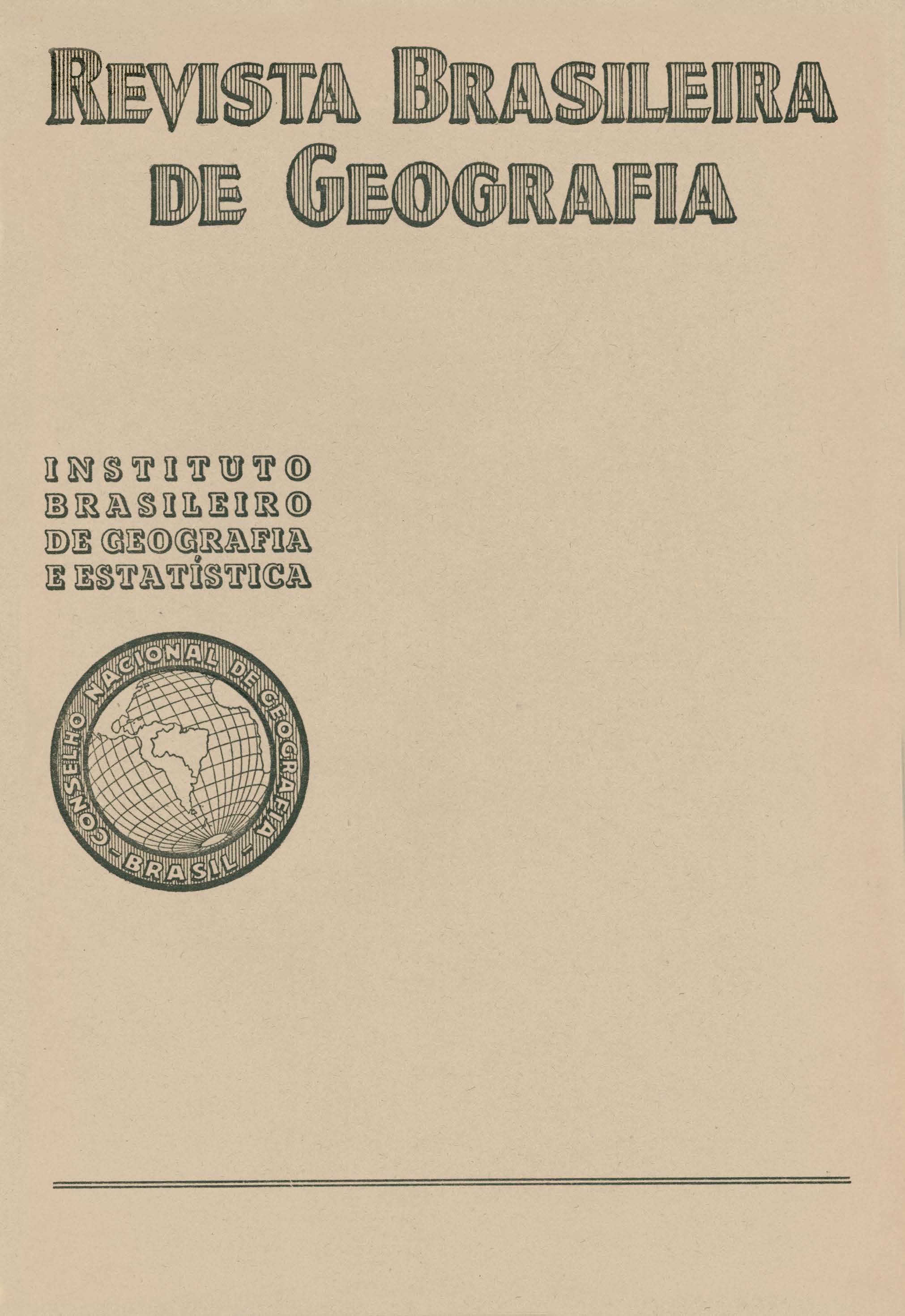Goiânia : uma cidade criada
Resumo
Professor Aroldo Azevedo, the author of various didactical works on Geography, studies in this article the new capital of the State of Goiaz, the city of GOIANIA.
At the beginning he refers to Goiaz, the old capital; mentions the precedents of the change of the seat of administration, as well as the works of the Committee entrusted with the choice of the new site, which ended with the approval by the Federal Interventor in May 1933.
Studying the new city (Goiânia), name chosen in 1935, he states its geographical situation, 180 km from the old capital, in a central position within the southern zone of the State, - "a region considered by all as the most prosperous and populated". It lies on algonkian soil, at the point where it comes in contact with spots of cretaceous land, and it is bathed by rivers tributary of the right bank of the Paranaíba, constituting an abundant hydrographic system and nearly all flowing down from the Rio Claro and Selada rnountains. Its bearings are 16"40'4" Iat. s and 49°15'9" Jong. W of Greenwich, on a plateau of 700 mt average altitude, with gentle slopes. 'the soil is compact and resistent, of silico-argilaceous composition and extraordinarily fertile.
The climate, by the Morize-Delgado classification, is "tropical", the mean temperatures being 25"C in summer and 21"C in winter. "The altitude counteracts in a large measure the effects which the weak latitude might cause, with influence upon the temperature and, In turn, upon the rainfall". There are frequent rains during the summer months and long dry periods in the cold season, although not drying up the watercourses.
Four miles distant, flows the Meia-Ponte river, an affluent of the Paranaíba, with an hourly flow of 15 million litres, and having the Jaó rapids, with above 450 HP. There is also the Anincuns, with excellent water and an hourly flow of 9 1/2 million litres.
The characteristic botanical landscape is composed of prairies or fields, whose monotony is now and then broken by groups of the burití palm (Mauritia vinifera).
The plan of the city, according to Prof. Aroldo, recalls the type named "radio-concentri’ by Pierre Lavedan< as well as the “inorganic” type, alsoaccording to the same authority. Goiânia is allotted and considered useful, or administrative sector; the NORTH (890.874 sq.m., of which 851.239 sq.m. are intended for buildings), or comercial and industrial sector; and the SOUTH (3,063.335 sq.m., of which only 906.373 are intended for building) ar the residential sector par excellence. He states that the general plan obeyed three objects: the topography, the traffic needs and zoning. In fact, the streets and avenues following the general direction of the level contours allow for normal drainage of rainwater and avoid cascades, so natural in a region of abundant rains. The traffic is directed through the avenues which, in a general way, lead to the administrative centre and facilitate communication. The residential sector has areas intended exclusively for pedestrians, thereby avoiding accidents.
With reference to the populating of the city, he proceeds to say that Goiânia is an excellent type of an "artificial" city, or •. as Lavedan prefers, a "created" city. Where',the town now stands there was not a single house m 1933, when the studies began.
The water supply was the subject of great care .. The watersheds collected number five and have ·all excellent drinking water and are able, in view of the1r altitude in relation to the city, to supply abundantly the 50,000 inhabitants as forecasted. The water sources are at a short distance from the urban centre, the farthest being 5 km away. As to food, products come from the numerous small farms and hornesteads in the outlying district. Commercial traffic is carried on mainly by motor trucks and is more intense with the neighbouring town of Campinas, to-day a part of the municipality of the capital.
To end up the author goes on to tell about the position of Goiânia within the State; only 59 km from Anapolis, Which, is served b~ railway, the new capital is the centre of an important highway system. The direction of the highways already existing are towards the north, reaching Leopoldina, on the Araguata river; Descoberto, .on. the upper Tocantins river, and the veadeiros plateau. Towards the south the roads link Gorânia to the Triângulo Mineiro and to the state of Mato Grosso. There is rapid communication with São Paulo by the VASP airplanes and the city seems "to be fated to a great development owing to its geographical situation" for it is the centre of the most populated and promising region of the State.






